
After the Civil War
ended newly free African American men
began searching for a place they could
earn a living with dignity and respect,
two attributes that were in short supply
for African Americans in September 21,
1866 when the first all black regiments of
the peacetime army were formed at Fort
Leavenworth, Kansas. They were the 10th
Cavalry, 9th Cavalry 24th Infantry, and
25th Infantry regiments. Their main
purpose was to protect America's frontier
from Indians.
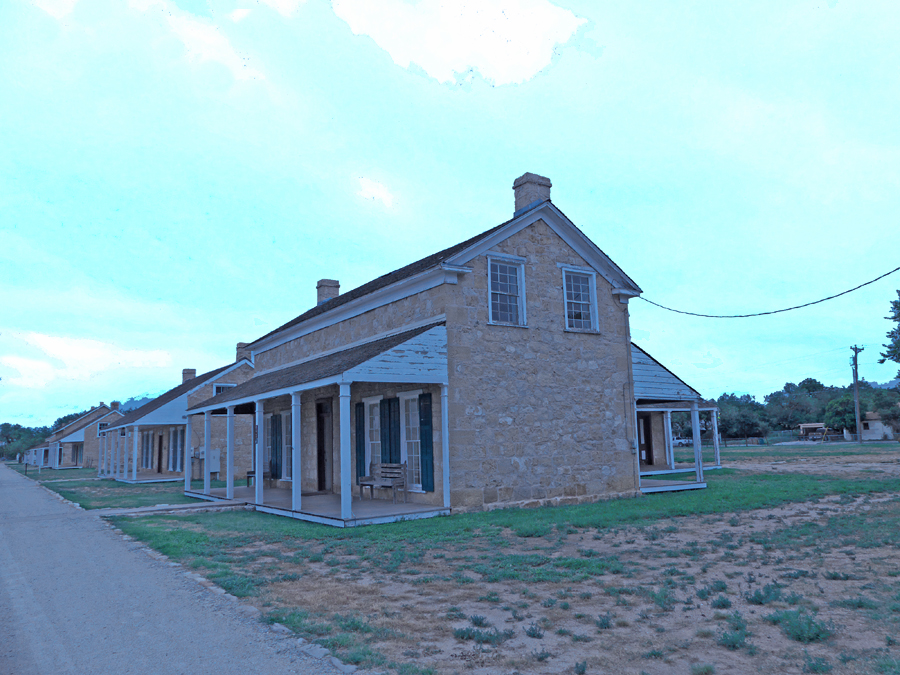 |
| Officers Row at Fort
Concho |
Companies of all four
regiments served at Fort Concho from 1869
to 1885. The 10th Cavalry had its
headquarters at Fort Concho from 1875
to1882. Over Fort Concho's 22-year active
history, the Buffalo Soldiers represented
half of the soldiers stationed at the
post.
Officially they were
referred to as the "Negro Cavalry" but
earned the nickname by which they are best
known, "Buffalo Soldiers," from the Native
American tribes they fought in the Indian
Wars.. Their Indian foes respected the
bravery of these soldiers and likened it
to a buffalo who continues to fight even
when gravely wounded. They also saw a
similarity of the African American hair
style to the buffalo's tightly curled fur.
On April 17, 1875, the
9th and 10th Cavalries headquarters were
transferred to Fort Concho, Texas. They
had already been quartered at Fort Concho
since May 1873. From 1873 through 1885,
Fort Concho was home base to 9th Cavalry
companies A–F, K, and M, 10th Cavalry
companies A, D–G, I, L, and M, 24th
Infantry companies D–G, and K, and 25th
Infantry companies G and K.
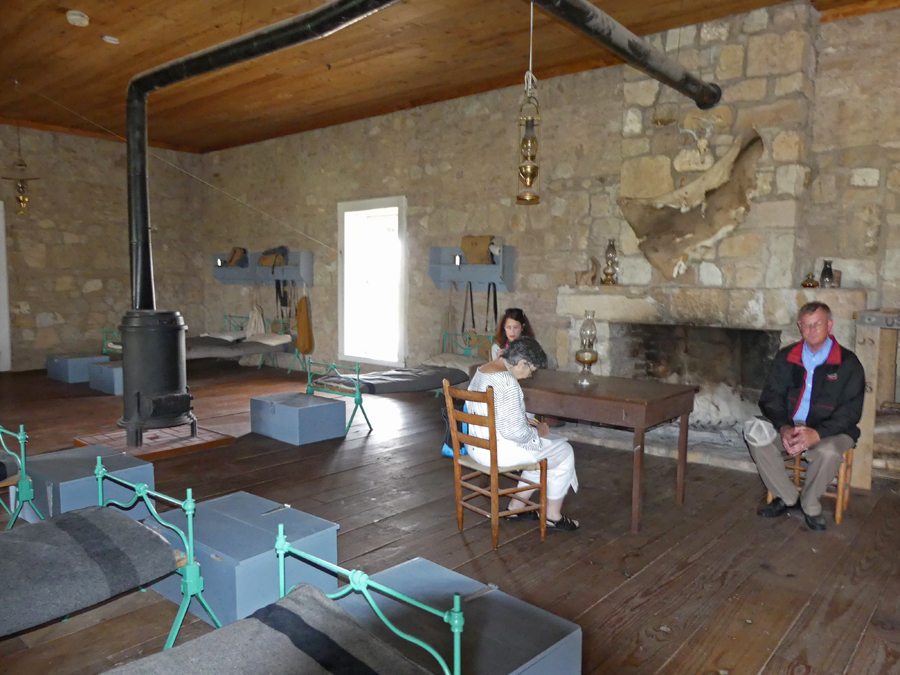 |
| Bob Bluthardt explains
the furnishings of a barracks at Fort Concho |
Fort Concho closed down
in 1889. Today it is the best preserved
frontier fort west of the Mississippi and
a wonderful place to get an accurate
picture of the life of a Buffalo Soldier.
The fort became a National Historic
Landmark in 1961 and is a living historic
museum owned and operated by the City of
San Angelo, Texas. There are 23 buildings
total on site but only about 10 buildings
are of interest to the public: Barracks #1
now the Visitors Center with videos and
some exhibits, Soldiers Barracks #2 is
filled with wagons and guns, Soldiers
Barrack #5 is recreated as it was in the
fort's active years. a mess hall behind, Headquarters
Building, two Officers Quarters, Living
History Stable, the hospital now the
Robert Woods Johnson Museum of Frontier
Medicine and
the Chapel Schoolhouse. One
officers quarters bldg is now a bed and
breakfast.
The Visitors Center is
the best place to start whether you chose
a guided or self-guided tour.
 |
| Exhibits at the
Vistors Center at Fort Concho |
We took a guided tour
with Bob Bluthardt, Fort Concho Museum
director, who explained the purpose of the
fort. "Think of this as Homeland Security
of its day. Forts in the West did not have
walls. They were basically a police
department but served a variety of other
tasks."
Bob showed us through
the places the soldiers lived, worked,
learned and were treated when ill. He
told us regarding the Buffalo Soldiers,
"They were treated no different from any
others. They were fed, outfitted and paid
the same as white soldiers. Although there
is documentary evidence of racism in
discipline and in some treatments by
soldiers. The Buffalo Soldiers had higher
reenlistment rates, lower disciplining
rates, and higher rates of achievement.
Many made the army a career. They had
basic benefits they could not get any
other place in life at that time."
Stepping into the
barracks, Bob pointed out what the soldier
had "a cot, a field box, some pegs and a
couple of sets of clothes that were
uncomfortable, scratchy and hot."
To the rear, we visited
the mess hall. Each barrack had its own
mess hall. Not unlike today, many men
didn't know how to cook so the sergeant
usually picked one man to do the cooking.
The benefit for the cook was he was
relieved of guard duty, latrine duty, and
other unpleasant tasks.
 |
| Typical enlisted men's
mess hall at Fort Concho |
The hospital is a high
spot for its glimpse of the ailments
common in that time. Typhoid, fevers, lots
of stomach ailment, mule kicks, gunshot
wounds, knife cuts were all common. TB
was prominent Accidental drowning was the
most common cause of death then. There was
no water control and no advance warning of
floods or storms.
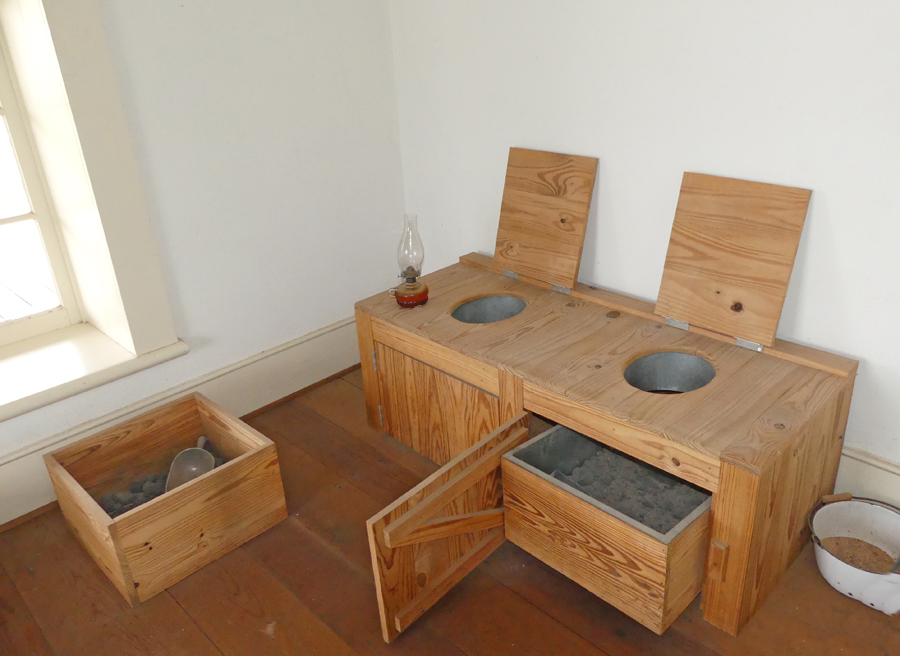 |
| How would you like to
use this communal toilet? |
The toilet facility,
called an "Earth Closet," was a very
primitive arrangement. The beds were the
same as the ones in the barracks. Being
sick in that era was a dangerous
situation.
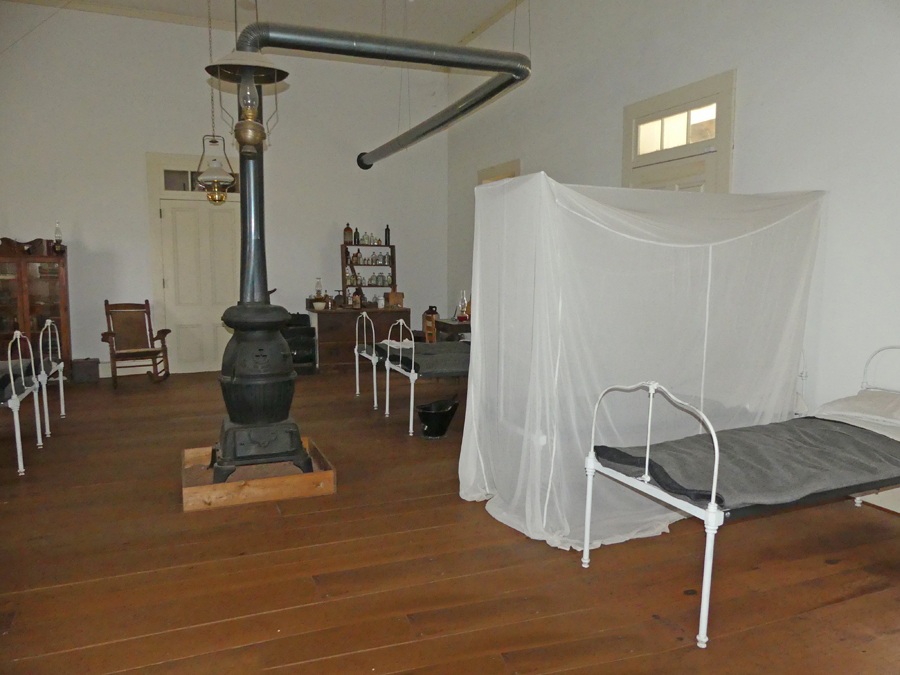 |
| Hospital at Fort
Concho |
The chapel was one of
the later buildings and doubles a
schoolroom. Ironically, the chaplain was
in charge of the bakery. He was also in
charge of education. It was only by the
1880s that soldiers were required to read
and write. The army assigned a chaplain to
the Buffalo Soldiers' regiments rather
than just to the base in an effort to
improve education rates among the
soldiers. That way, the chaplain moved
with the regiment when they were sent
elsewhere.
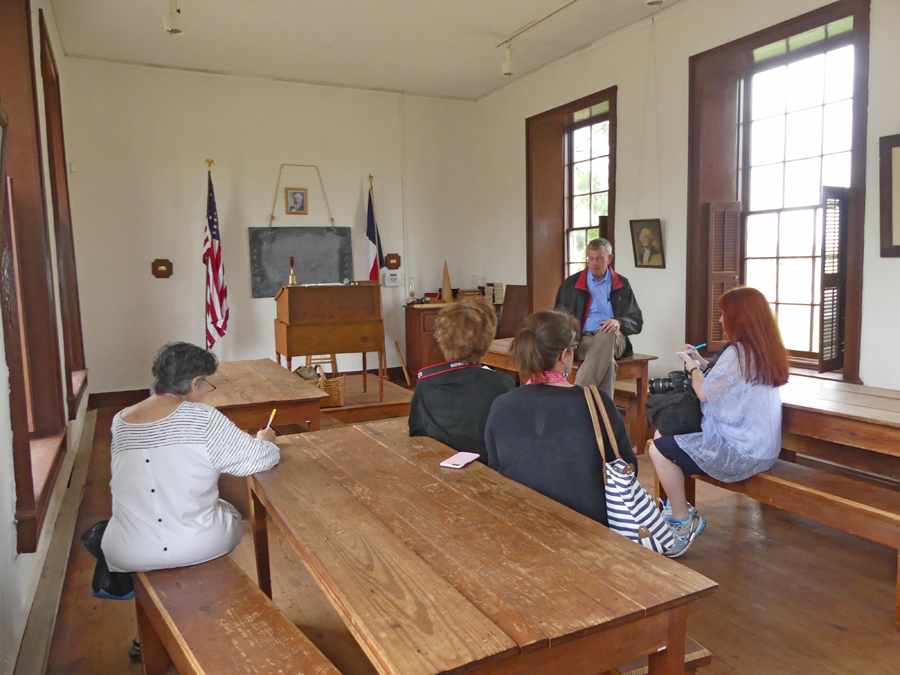 |
| The chapel/schoolroom
was one of the last buildings built at Fort
Concho |
The Officers Quarters
were far nicer than the enlisted men's
barracks. Furnishings were similar to a
upper middle class home of the era.
As might be expected
the old fort has its share of ghostly
tales. One involves the Buffalo soldiers
of the 10th
Cavalry, the most famous of the Buffalo
Soldier units, which was stationed here
from 1879 to 1882. Their commander Colonel
Grierson had a young daughter, Edith, who
loved to play jacks. Edith died in 1879 of
typhoid fever in the upstairs bedroom of
Officers Quarters One when she was only 12
years of age. Visitors have often seen a
little girl playing jacks. The room turns
suddenly cold when she appears. She
usually turns and smiles then resumes her
game.
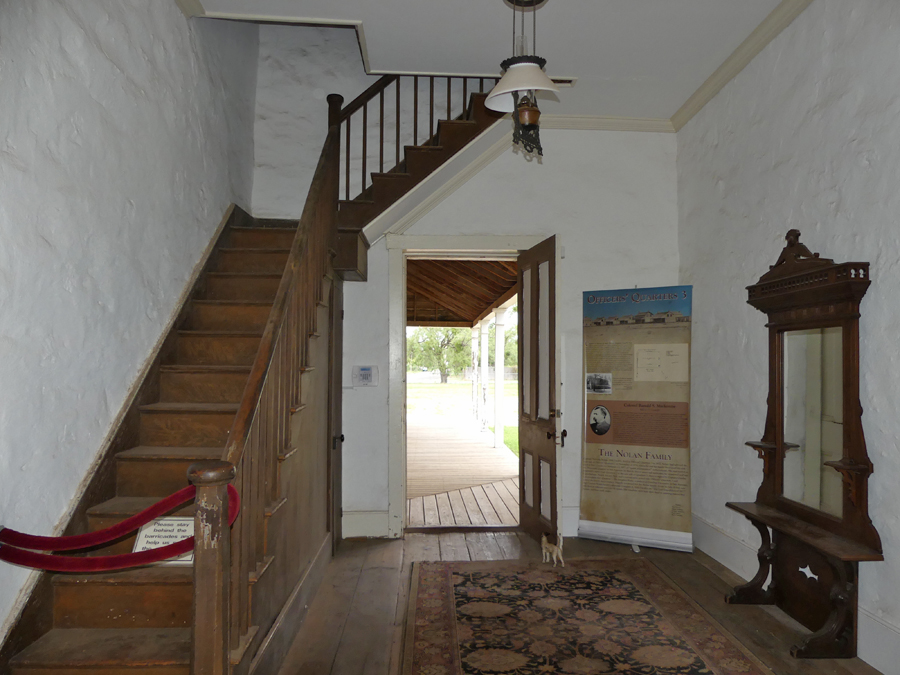 |
| A stairwell at one of
the officers quarters at Fort Concho |
Another tale relates to
another of the famous commanders at Fort
Concho, Colonel Ranald S. Mackenzie. His
presence
is reported in his former home at the
center of Officers Row. Staff
and visitors have heard someone cracking
their knuckles, a well know of habit of
Mackenzie's.
The fort is well worth
a visit whatever you reason. But the
Buffalo soldiers have earned their place
of honor here. Thirteen enlisted men and
six officers from these four regiments
earned the Medal of Honor during the
Indian Wars. This year celebrates the 150th
anniversary of the Buffalo Soldiers who
pushed the frontiers of both their country
and of prejudice long before the works
"Civil Rights" were coined.
For more info:
http://fortconcho.com/
| 




















